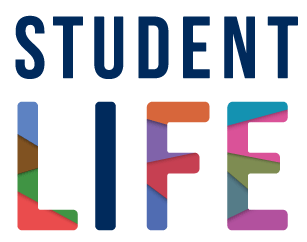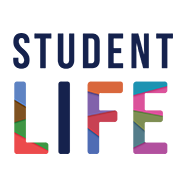U of T alumnus, partner bring visibility to Indigenous and two-spirit community on The Amazing Race Canada
This article was originally published by Geoffrey Vendeville on U of T News on July 16, 2019. Reprinted with permission.
A University of Toronto education is meant to prepare graduates for anything life throws at them – including, apparently, whirlwind journeys across the country on The Amazing Race Canada.
On this season of the reality TV show, three alumni – Dr. James Makokis, who has a master’s degree in public health from U of T, Sarah Wells, a Varsity Blues and Olympic hurdler, and Thinesh Kumarakulasingam, a software developer – are vying for the grand prize: $250,000, two cars and a trip around the world.
Makokis and his partner Anthony Johnson are also racing for another reason. The couple are Indigenous – Makokis is a member of the Saddle Lake Cree Nation, Johnson is Navajo – and identify as two-spirit. Makokis says he wants to use his appearance on the show to raise awareness about sexual and gender diversity, while Johnson says he wants to represent “a different flavour of humanity” on TV.
The couple, who live in Edmonton, tied the knot during a different race: They exchanged vows wearing matching tuxedo T-shirts at the 32-kilometre mark of the Vancouver Marathon in 2017.
In the first two episodes of The Amazing Race Canada, they encountered challenges as diverse as zip-lining across a dormant copper mine in Kamloops, B.C. to dirt-biking in Revelstoke, B.C.
Makokis and Johnson recently spoke to U of T News about why they wanted to go on the TV show and how they prepared for the grueling race – including a speedy, self-guided U of T campus tour.
James, you received a master’s in public health from U of T in 2006. You then graduated from medical school. Can you catch us up on what you’ve done since then?
Makokis: I did medical school at the University of Ottawa. Then, after that, (I went) to the University of British Columbia to the aboriginal training residency program in Victoria. Since then I’ve been working as a family doctor.
You’re a member of the Saddle Lake Cree Nation, and I read that it was your dream to work within your community.
Makokis: Yeah, I ended up working at home for a couple of years. Afterwards, I moved on to do a sub-specialty practice in transgender health. Right now, that’s a large part of my practice. I operate a specialty clinic in south Edmonton. I also work three days per week doing primary care on another Cree reserve, which is near to mine and it’s called Kehewin Cree Nation.
And you continue to be involved with U of T’s Dalla Lana School of Public Health. Can you tell me about that?
Makokis: I’m an adjunct faculty member because I’m supervising one of the graduate students. I’m also on a community advisory council.
How did the two of you meet?
Johnson: We met because I messaged James on Facebook. He had been tagged in an article in Out Magazine about the Montana Two-Spirit Society or Two-Spirit Gathering. It’s an organization that fosters knowledge and community among two-spirit people. It’s based out of Montana, but every year they host a gathering. It tends to be people from all across the U.S. and Canada, and guests from other nations, too.
Anyway, there was an article in Out Magazine in which [James] appeared as a model. I had been dealing with issues of homophobia and discrimination in ceremonies I was attending, and I was looking for guidance. I reached out to him on a whim and we started chatting on Facebook.
I read an article that said you’re both aiming to raise awareness about sexual and gender diversity. Can you tell me about what it means to be two-spirit and why you want to spread awareness about it?
Makokis: There are many interpretations of being two-spirit. It basically represents gender and sexual diversity in Indigenous communities, and prior to colonization that was respected and valued within these various Indigenous Nations. People had different roles and functions, but [the term] encompasses not only sexual identity, but other things.
Johnson: For me, two-spirit is just an English word to represent something much deeper. So, in my language it would be called nadleeh. There’s a story about the word and how it relates to the changing of the seasons. But it’s kind of describing the idea that the energy of a being can change, and be transmorphic. So “two-spirit,” for me, means that I’m not a solely male energy or solely female. I have many expressions and they’re constantly in flux.
And why was it important for both of you to raise awareness?
Makokis: For many different reasons. For myself, as a physician working with the trans community especially, but also two-spirit people, there needs to be positive role models for that community. There needs to be people from the community who are advocating and being proud and open about who they are.
Young two-spirit and trans people, especially, have the highest rate of suicide of any group. So by providing culturally safe transgender care and medical hormone therapy and intertwining teaching of what it means to be two-spirit and the teachings from a Cree perspective – all of those things foster resilience. If they get to see diversity on TV, if they get to see there are people like them out there, who are also successful, have gone to school but who have also maintained their culture, identity, heritage and language – having all those things makes them stronger.
Johnson: For me, the idea of being on TV is that you’re seen. When you’re seen, you can’t be denied because I’m like in your cornea [laughs]. So it’s not just about the two-spirit angle. It’s about everything that I represent: being an American, being gay, being two-spirit, being Indigenous, being a slightly flamboyant man, but also being six-foot-three, having fun, being aggressive. I’m all of these juxtapositions that lead people to question their assumptions and pre-conceived notions about me.
One of the things I love about James, and the thing I love about us, is that we know what a question mark looks like on someone’s face. Because when they see us, they don’t know where to place us. We’re Indigenous, we’re gay, but James went to the University of Toronto – a very prestigious institution – and he’s a physician. I went to Harvard to study economics. And so to represent everything that we are, and to show a different side of life, a different flavour of humanity, is the reason why I wanted to be on the show – even if it means eating bugs.
What makes you two a good team– and not just on The Amazing Race Canada?
Johnson: I think it’s understanding each other, knowing each other, having forgiveness for one another. And we’re also both very competitive people. You can’t win if you’re not willing to compete.
A U of T education prepares graduates for life’s biggest challenges. James, I imagine your courses didn’t cover dirt-bike racing, tree-planting and zip-lining, but did your education come in handy in other ways?
Makokis: As a public health nutrition graduate, I did really take note of what the other racers were eating or not eating. I was very quick to note who the vegans were and who the people with gluten intolerances were in the event that I had to face them in an eating challenge.
Johnson: I do want to add that we did a practice run at U of T.
What do you mean?
Johnson: We ran around U of T at night because James wanted to show me all his old haunts. That was one of our training runs to prepare for the show. We were in Toronto and he wanted to show me U of T, and we were training already for the show at that point.
Makokis: I showed him Hart House, Convocation Hall and where my dorm was, and the hot dog van I went to when I was done clubbing. Stuff like that.
Tell me about your team name.
Makokis: Our team name is Ahkameyimok. It’s a Plains Cree word for: “Don’t give up, keep going, persevere.” When I was going to university and was not having a good time at U of T or U of O, and I wanted to quit or things like that, it’s something that our elders or family members would say to me: “Ahkameyimok,” or “keep going.” It was always implied that I wasn’t doing all that for myself, but it was to come home and bring those skills and knowledge and education back to improve our community health and improve our nation. It was a big responsibility and it wasn’t just for me. It was a word of encouragement they would always tell us. We wanted to have something positive for people to learn about Indigenous people, Indigenous languages. It’s the International Year of Indigenous Languages. But also, it’s really fun to say. You can hear Anthony saying it to me while I’m flying over the zip line over the mine in Kamloops. Other people got to say it, too.
Johnson: You’ll be the first person we ever told this to, but the way Team Ahkameyimok came into existence: We had been talking about team names, and then one day I went out for a run and I was tired. I didn’t want to run, my body was hurting but then the word – and I’m not Cree – ahkameyimok popped into my head. And it kind of makes me think of someone on the plains before cars – they’re walking through the snow. There’s a blizzard. There are all these adverse situations and they’re up against the wall. You can either sit down in the snow and die or you can ahkameyimok and get to that next place that you need to go in order to survive.
On that note, what’s the toughest thing you had to do so far on the race?
Johnson: I think at this point, the most difficult part is the pace of The Amazing Race. All the challenges are equally difficult because they’re stressful and you don’t know what you’re doing and you’re like ripping open a clue and walking into a situation totally blind. But the thing you can’t prepare for is that The Amazing Race isn’t a marathon, it’s a sprint. It happens at an incredibly fast pace and you have to adjust to that. You can’t do any of the challenges if you’re tired or not mentally there.
Makokis: For me, in medical school we have block exams every four to six weeks. That’s where you write about the entire body system you just had – respiratory or cardiovascular, for example. So you’re extremely stressed especially on the test day.
Johnson: If I could provide an analogy, it feels like it’s 10:30 p.m. and your paper is due at midnight and you still haven’t started [laughs]. You’re increasing the margins, enlarging the font size. It’s like that, but on steroids.
I think we all know how that feels, unfortunately. Are there any fears you had to overcome on the show?
Makokis: I’ll tell you what my fears were going into the show: Anything with bugs grosses me out. Aspects of height also scare me.
And, James, you had to zip line, so that must have been pretty scary for you.
Makokis: We had done Central America’s longest and highest zip line in Costa Rica in December, so when I saw that one I was like, “OK, this is nothing.”
In reality, when you go to a challenge you just want to get through it because you don’t want to disappoint your partner.
Johnson: For me, I didn’t have a lot of fears, but I think the most difficult thing to get over is giving up control because you’re in this thing where you don’t know what’s happening. You don’t know where you’re going next and you just have to go with it.
The Amazing Race Canada airs Tuesdays at 9 p.m. EDT on CTV, CTV.ca and the CTV app.




